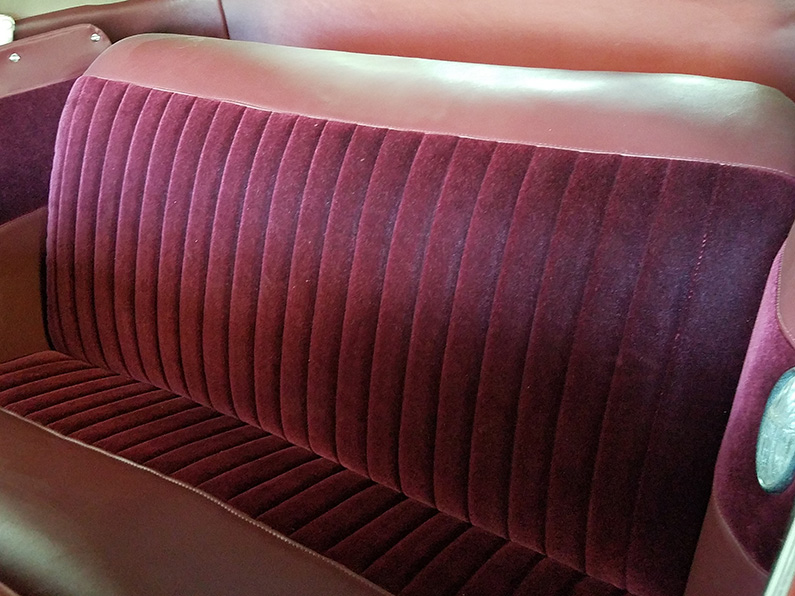Change Your Area with Professional Upholstery Repair Solutions
Change Your Area with Professional Upholstery Repair Solutions
Blog Article
The Ultimate Overview to Furniture Fixing Strategies
In the world of furniture maintenance, the art of upholstery repair work is a skill that can breathe new life into worn-out items and maintain treasured possessions. Stay tuned as we untangle the details of this craft and reveal the secrets to mastering upholstery repair work methods that will certainly boost your furnishings reconstruction undertakings.
Assessing Upholstery Damages
When evaluating furniture damages, it is necessary to perform a complete exam to accurately establish the extent of the issues present. Begin by visually examining the furniture for any visible tears, slits, spots, or staining.
Following, assess the underlying framework of the upholstery to look for any kind of damage to the structure, springtimes, or cushioning. Often, the damage might not be quickly noticeable on the surface area however can dramatically influence the overall stability of the upholstery. By completely taking a look at both the external upholstery and inner elements, you can ensure that all concerns are determined and suitably dealt with throughout the fixing process.
Furthermore, think about the sort of upholstery material made use of as various materials and natural leathers might require specific fixing methods. upholstery repair. Comprehending the product homes will help in selecting the most suitable repair techniques and items to attain ideal results
Important Tools and Materials
To efficiently carry out upholstery repair work, having the suitable tools and materials is paramount for achieving professional results. Important tools for upholstery repair work include a staple gun for protecting fabric, furniture needles and string for sewing, scissors for reducing fabric, a rubber mallet for tapping in furnishings components, and pliers for eliminating old staples and nails. By guaranteeing you have the necessary tools and materials before starting an upholstery repair job, you can function effectively and effectively to recover furniture to its previous glory.
Preparing the Furniture Surface
Preparation of the furniture surface area is a crucial initial action in ensuring the effective result of any type of upholstery fixing task. Prior to starting any type of repair service work, it is important to completely clean the furniture surface to get rid of dust, dust, and any various other particles that could interfere with the bond of new materials. This can be done utilizing a vacuum cleaner, a soft brush, or a damp fabric, relying on the kind of furnishings and the level of dust present.
As soon as the surface area is clean, any type of broken or loosened furniture material, padding, or springtimes should be carefully eliminated. This action is vital to make sure that the new products adhere securely and that the fixed upholstery keeps a smooth and expert look. Furthermore, any kind published here of old staples or tacks must be pulled out, and the surface area must be evaluated for any structural damages that might require to be attended to prior to proceeding with the repair.

Repairing Openings and splits
After making sure the furniture surface area is totally free of debris, dust, and dust and removing any type of loosened or damaged furniture products, the next action in furniture fixing includes attending to tears and holes in the material. Repairing splits and openings in furniture can help prolong the life of your furnishings and recover its aesthetic appeal. It is essential to thoroughly match the color and structure of the spot material to the original furniture for a smooth repair service.
Removing Spots and Smells
Attending to persistent discolorations and lingering odors in furniture calls for a targeted and complete approach to guarantee efficient restoration of the textile's appearance and freshness. Stains can be caused by various materials such as food spills, pet mishaps, or drink mishaps, while odors usually stem from smoke, pet dander, or spills permeating the upholstery fibers. To deal with spots, it is necessary to recognize the kind of stain first to apply the proper cleansing solution. For water-based spots, blotting with a combination of mild cleaning agent and water can be effective, while oil-based spots might require a solvent-based cleanser. Odors, on the various other hand, require a much deeper cleaning process that includes neutralizing the source of the odor instead of masking it. Utilizing baking soft drink or specialized furniture deodorizers can aid eliminate odors successfully. In some cases, professional cleaning company might be required for severe stains and odors that continue in spite of natural home remedy. Normal upkeep and punctual attention to spills can help in stopping deep-rooted spots and check out this site odors, maintaining the furniture's problem. get redirected here

Verdict
To conclude, grasping furniture repair methods needs mindful analysis of damage, using necessary devices and materials, proper preparation of the furniture surface area, and the proficient repair work of tears, openings, spots, and smells. By adhering to these actions, individuals can efficiently restore and prolong the life of their furniture.

Crucial tools for furniture repair include a staple gun for securing fabric, furniture needles and string for stitching, scissors for cutting fabric, a rubber mallet for touching in furniture components, and pliers for removing old staples and nails. By guaranteeing you have the essential devices and products before beginning a furniture fixing project, you can function effectively and efficiently to restore furnishings to its former glory.
Prep work of the furniture surface area is a critical preliminary action in making sure the successful result of any furniture repair work task.After guaranteeing the furnishings surface is cost-free of dirt, dust, and debris and removing any type of broken or loosened furniture materials, the following step in furniture repair includes addressing rips and holes in the textile - upholstery repair. Repairing rips and holes in upholstery can aid extend the life of your furniture and recover its visual appeal
Report this page